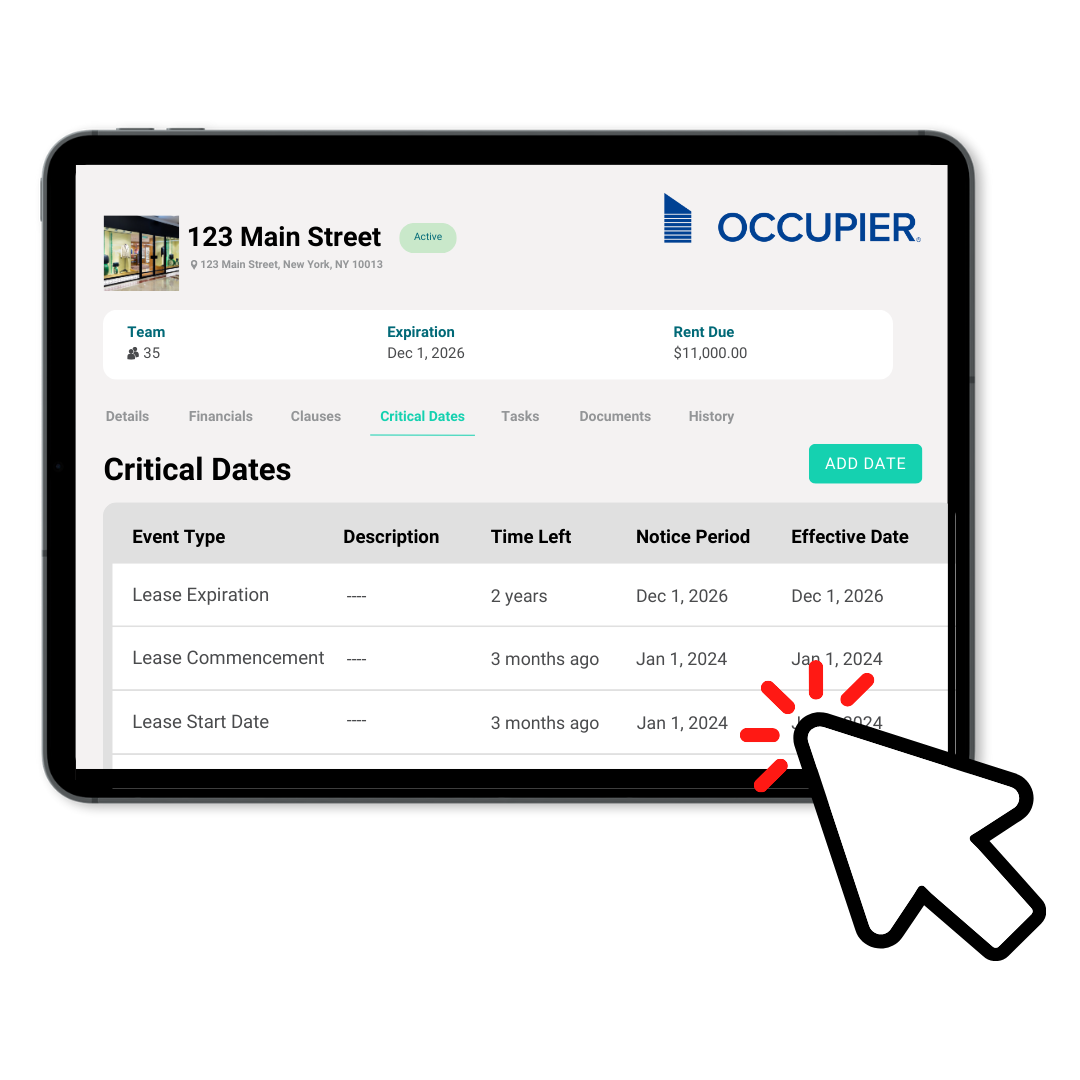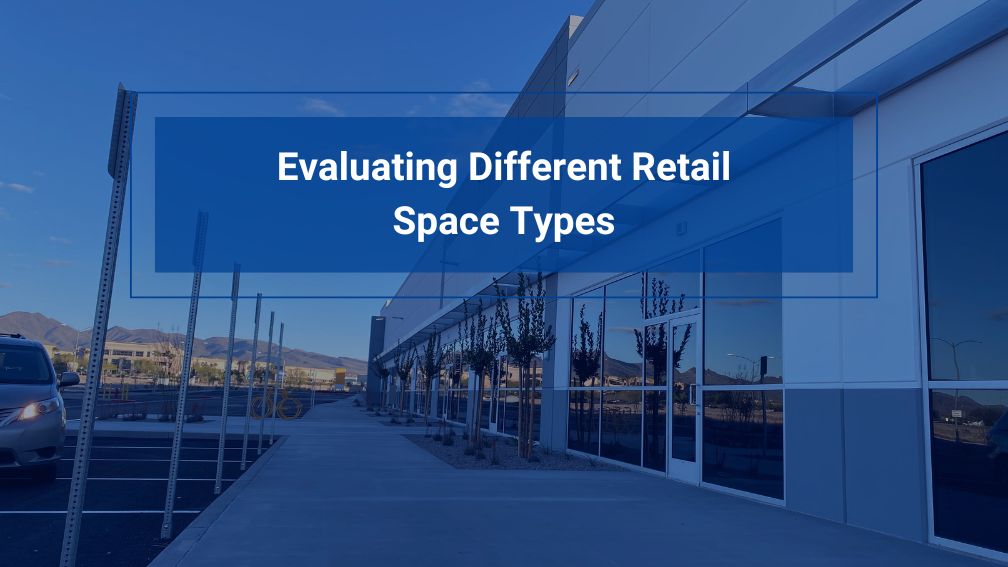Evaluating Different Retail Space Types: Finding the Right Fit for Your Business
Last Updated on February 20, 2025 by Morgan Beard
Selecting the right retail space is one of the most important decisions a commercial tenant can make. The type of space you choose impacts customer foot traffic, brand perception, and operational efficiency. With a variety of retail formats available, understanding the pros and cons of each can help you make an informed decision that aligns with your business goals. We are breaking down the key retail space types and how to evaluate them for your needs, including factors like lease terms, customer demographics, and market trends.
Emerging Retail Formats
Pop-Up Shops
Short-term retail spaces allow brands to test markets, launch new products, or create buzz without the commitment of a long-term lease. Pop-ups are increasingly popular among direct-to-consumer (DTC) brands exploring physical retail. When evaluating a pop-up space, consider lease flexibility, location visibility, and marketing potential. Additionally, pop-up shops can serve as an excellent way for e-commerce brands to bridge the gap between digital and in-person shopping, offering customers a tactile experience.
Mixed-Use Developments
Retail spaces in mixed-use developments offer a blend of residential, office, and entertainment spaces, creating a built-in customer base. These locations work well for experiential retail brands and service-based businesses that thrive on consistent foot traffic from nearby residents and workers. With urbanization trends on the rise, mixed-use spaces offer retailers an opportunity to integrate into everyday consumer lifestyles, driving loyalty and repeat business.
Destination Retail & Big Box Spaces
Power Centers
Home to large anchor tenants like home improvement stores and warehouse clubs, power centers attract shoppers looking for specific retail experiences. These spaces benefit retailers that can complement existing anchors but may require a larger upfront investment in marketing to drive individual store traffic. Given their size, these spaces often provide ample parking and a diverse mix of tenants, creating a regional shopping destination.
Lifestyle Centers
These upscale, open-air shopping destinations focus on experience-driven retail. They are designed to mimic main street environments and often attract high-income shoppers. Retailers considering a lifestyle center should evaluate brand positioning and synergy with neighboring tenants. Many lifestyle centers also incorporate green spaces, dining options, and entertainment venues, creating a vibrant social hub that enhances customer dwell time and engagement.
Traditional Retail Spaces
Street-Level Storefronts
These high-visibility locations are ideal for businesses that rely on foot traffic and brand exposure. Found in urban centers and main streets, street-level storefronts often come with premium rent but offer strong customer engagement. Consider factors like pedestrian volume, local demographics, and competition before signing a lease. Additionally, storefronts in highly trafficked areas can benefit from impulse buyers and tourists, making them a strong choice for certain retail concepts.
Shopping Mall Units
Mall locations provide built-in foot traffic and a curated shopping experience, making them a great option for brands looking for consistent exposure. However, tenants should assess lease terms carefully, including revenue-sharing agreements, common area maintenance (CAM) costs, and co-tenancy clauses that impact profitability. While malls offer a steady stream of visitors, retail trends have shifted towards experiential shopping, requiring tenants to consider how their store layout and customer experience will stand out from competitors.
Choosing the Right Space for Your Market
Selecting the ideal retail space isn’t just about location or lease terms—it’s about understanding your customers and aligning your space with their needs. The right space should enhance the customer experience, offering convenience, accessibility, and a layout that supports purchasing behavior. Retailers should ask: Does this space make it easy for my customers to engage with my brand? Does it complement the shopping habits of my target audience?
For example, brands targeting younger, experience-driven consumers may thrive in mixed-use developments with vibrant community spaces, while big-box stores might be better suited for suburban areas with strong car traffic. Ultimately, the most successful retail spaces are the ones that feel natural to the customer, making their shopping journey seamless and enjoyable.
Aligning Retail Space with Customer Needs
The most strategic retail spaces are those that align not only with the brand but with the specific needs and behaviors of the target customer. Understanding how your customers shop, what conveniences they expect, and how they interact with physical spaces can make a significant difference in your store’s success.
For instance, if your customers prioritize convenience and efficiency, a location with easy parking and quick access may be ideal. If they seek a unique, immersive shopping experience, a space within a lifestyle center or mixed-use development could better serve your goals. Taking the time to analyze customer preferences ensures that your retail space enhances their overall journey and strengthens brand loyalty.
Evaluating Lease Terms & Costs
Regardless of the retail space type, tenants must carefully analyze lease terms, costs, and operational flexibility. Factors like base rent, percentage rent clauses, CAM fees, and lease duration can significantly impact long-term success. Understanding the total cost of occupancy—including hidden fees and operational expenses—can prevent costly surprises down the line. Learn more about lease management best practices here.
Additionally, tenants should consider how lease agreements align with their long-term business strategies. For example, if expansion is a goal, negotiating flexible lease terms or rights of first refusal for nearby spaces can be a strategic advantage.
Retail Space Types
Choosing the right retail space is about more than just location—it’s about understanding how each format aligns with your brand, target customer, and business objectives. By evaluating the benefits and challenges of each retail space type, you can make an informed decision that sets your business up for long-term success. Need help managing your retail leases? Take a self-guided tour of Occupier!

Product Tour
Take a self-guided tour and see how the fastest-growing commercial tenants leverage Occupier for lease management & lease accounting.
